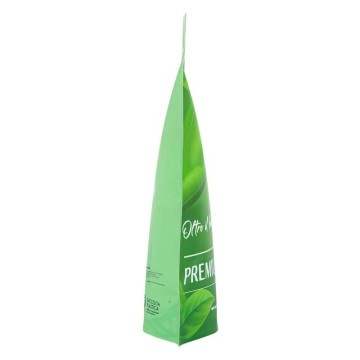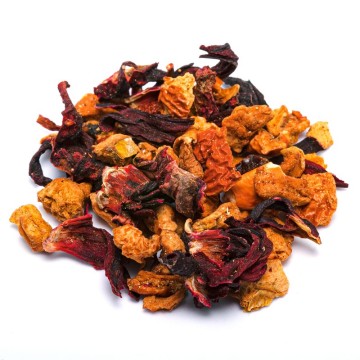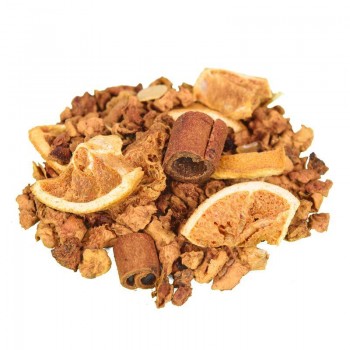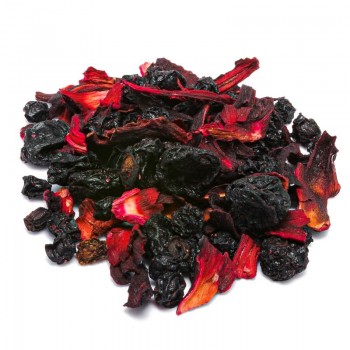Lavender infusion is an excellent drink for our body, which offers various benefits.
Lavender is known as a diuretic plant and, historically, as an antiseptic for the urogenital tract; it has been adopted over the centuries to combat cystitis and intestinal inflammation. Furthermore, this infusion in combination with other ingredients, gives remarkable well-being properties, from relaxing to qualities for correct digestion.
Lavender infusion: properties and benefits
This Mediterranean flower, now widespread throughout the world, is known for the many benefits it brings, and the main one when consumed by infusion is certainly the diuretic and purifying one for the airways urinary.
Used as an antiseptic in the past, to fight urinary tract bacteria, lavender infusion gives its natural anti-inflammatory properties due to the polyphenols it contains.
The genitourinary tract, if prone to irritation, can benefit from the soothing qualities of lavender, which purifies and reduces pain.
The flowers in infusion have purifying qualities, enhanced by the effect of increasing diuresis, and by the activity of antioxidants which help eliminate toxins in the body.
Linked to the diuretic effect, another advantage that could be obtained from the infusion of lavender is the reduction of abdominal swelling, when it is due to water retention, or excessive growth of bacteria in the intestinal tract.
In addition, lavender is known as a plant that promotes relaxation. In fact, an infusion of lavender becomes an aromatherapy experience, capable of calming stress, anxieties and nervousness.
It is often recommended in the evening to promote sleep, thanks to its sedative properties. Its effect on the nervous system is due to linalool, a component with relaxing properties. Lavender also contains several antioxidants, useful for our body, and beneficial substances for keeping the digestive system healthy.
Its essential oil, which comes from the flower, acts in treating stomach irritation, and as an antispasmodic. In fact, lavender can relieve intestinal cramps, nausea, hangovers from vomiting, stomach pain with burning sensations or gastric ulcers.
Lavender essential oil has a calming effect on the digestive system, enhanced by other components such as lemon balm and calendula. The antispasmodic qualities are very useful for women during the menstrual cycle, suffering from abdominal pain, bloating, muscle spasms. An infusion of lavender can promote relaxation of the muscles, and provide greater relaxation.
Furthermore, the infusion favors a correct assimilation of food also thanks to the components of anise, fennel and apple.
By taking this infusion during a cold, it is also possible to obtain natural support against inflammation. Relieves cough and offers respiratory benefits. By inhaling the fumes of the herbal tea well, relief can be obtained in case of bronchitis and laryngitis.
Origins and History of cultivation
The herbal tea blend has various natural elements that help the well-being of the urinary and digestive systems.
To create this infusion, several ingredients have been used: lavender flowers, lemon balm, apple pieces, rose petals, fennel, anise seeds, cumin, calendula flowers, blue raspberry. The main component is lavender, a flower of Mediterranean and oriental origin, which is now widespread throughout the world in the United States, Japan, Australia, southern Europe.
Her story dates back to antiquity and in the bible of her perfume she is mentioned with the name of Nardo, as the city from which she was believed to have come, Naarda in Syria.
Greeks and Romans also benefited from her talents, and in the Roman baths it was used both for therapeutic purposes and to create scented water, in thermal baths.
Precisely because of its ability to care for the body, and the possibility of being used as an antibacterial for the domus, it was defined in Latin as "lavender", to wash. Its domestic use for deodorant and cleansing purposes has remained over the centuries in the precious perfumesthe lavender and in the bags to store the laundry. Even the aspect of phytotherapy has never been neglected, even if minor, using its flowers in infusions and ointments.
If in ancient times the Egyptians also used it in embalming ointments or to perfume the oil of lamps, in the Middle Ages it was considered excellent for driving away witches.
In more recent times, lavender has been used in aromatherapy as a calming and sedative to promote sleep, as an external soothing for wounds, or internally for the well-being of the stomach.< /p>
The flowering tops are harvested for the active ingredients, after flowering, when the plant is richer in aromatic substances.
Plant and flowers
The components of the herbal tea are many, and the mixture contains leaves and flowers of different origins. Lavender has several varieties, and the best known and most effective is the "true" lavender, Lavandula angustifolia Miller, of the Lamiaceae family.
Other typologies are Lavender spica (Lavandula latifolia Med.) and Lavandula hybrida Rev., a natural hybrid between the other two, and often referred to as Lavandin.
Hybrid lavender is widespread in Italy and has an aroma more similar to camphor.
"True" lavender is a small evergreen shrub with greyish-green leaves, and splendid flowers that are gathered in spikes. The lavender fields are famous for their beauty, in fact, widespread since it is very easy for this plant to adapt to land and latitudes. It is necessary to avoid soils that are too stagnant, and prefer sunny areas, sheltered from the wind.
It blooms differently depending on the species, usually from spring to summer.
The Rose is a perennial plant of the Rosaceae family. There are over three hundred species and thousands of cultivars of this plant, famous for its flowers. It can be in the form of upright shrubs, climbers, thorny or not. The flowers change in shape, size and color from white to yellow and red. Most of the species are native to Asia.
Fennel (Foeniculum vulgare) is a plant of the Apiaceae (Umbelliferae) family native to the Mediterranean. It is eaten as a vegetable, and every part of the plant is scented. Gives yellow flowers, followed by green and then greyish fruits, improperly called seeds.
Anise comes from Pimpinella anisum (anise), an annual and aromatic plant, belonging to the Umbelliferae family. Anise is one of the oldest medicinal plants, up to 50 cm tall, with white flowers and small green to yellow seeds that ripen from August to September.
The Malus domestica plant of the Rosaceae family gives us apples. It is a tree native to Asia, now spread all over the planet. The fruits differ in colors and in many varieties, and have been used in human nutrition for thousands of years.
Melissa officinalis is a plant belonging to the mint family, known for the sedative properties of its leaves. It is native to the eastern Mediterranean and western Asia, also called limoncina grass due to its lemon-like smell.
Cumin is the spice of Cuminum cyminum, it is an annual herb native to the Mediterranean, widespread in many territories. It is grown to harvest the seed, which is used as a beneficial spice particularly in Asian, Mexican, Indian and Middle Eastern cuisines.
The blackberry is the fruit that derives from the bramble Rubus Fruticosus L. and belongs to the large Rosaceae family. It grows spontaneously in Mediterranean countries as a perennial and thorny plant, which creates the classic blackberry groves.
Calendula officinalis is an annual herbaceous plant, which grows to about 70 centimeters. Its yellow-orange flowers, for which it is also called fiorrancio, are known for their beneficial and soothing cosmetic properties.
Nutritional values of lavender infusion
The main active ingredients of lavender are linalool, linalyl acetate, lavandulol, and some substances such as cineole and camphor.
Other antioxidant beneficial groups are sesquiterpenes, geraniol, limonene, coumarins and saponins.
How touse the ingredients in the relaxing herbal tea
The infusion is obtained by placing about 3-5 grams of the mixture of lavender petals with water at 100 °C in a cup (250 ml). Leave it to infuse for 10 to 12 minutes, before drinking the diuretic and relaxing herbal tea.
Add honey or sugar as desired.
Lavender infusion: side effects and contraindications
Even if lavender tea brings benefits, it is necessary to respect the recommended doses and not exceed them for too long periods. Excessive intake of lavender can cause constipation, loss of appetite and headache.
In addition, lavender has a sedative effect that could interfere with other medications. Therefore, it is recommended to consume the infusion in the evening before going to sleep, and to inquire with a specialist if you are taking tranquilizers.
It is not recommended for pregnant or lactating women.











 No reward points for this product.
No reward points for this product.















